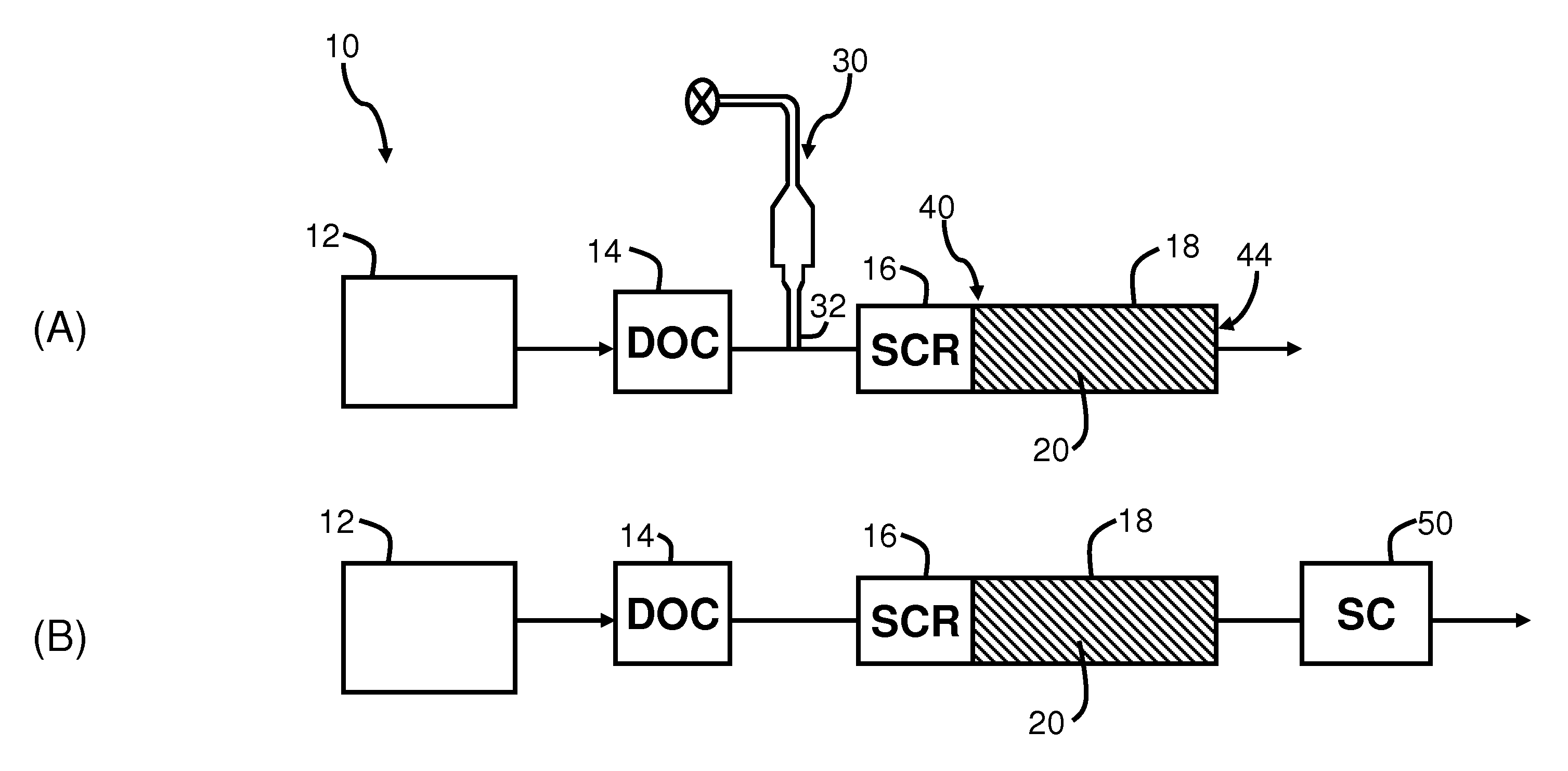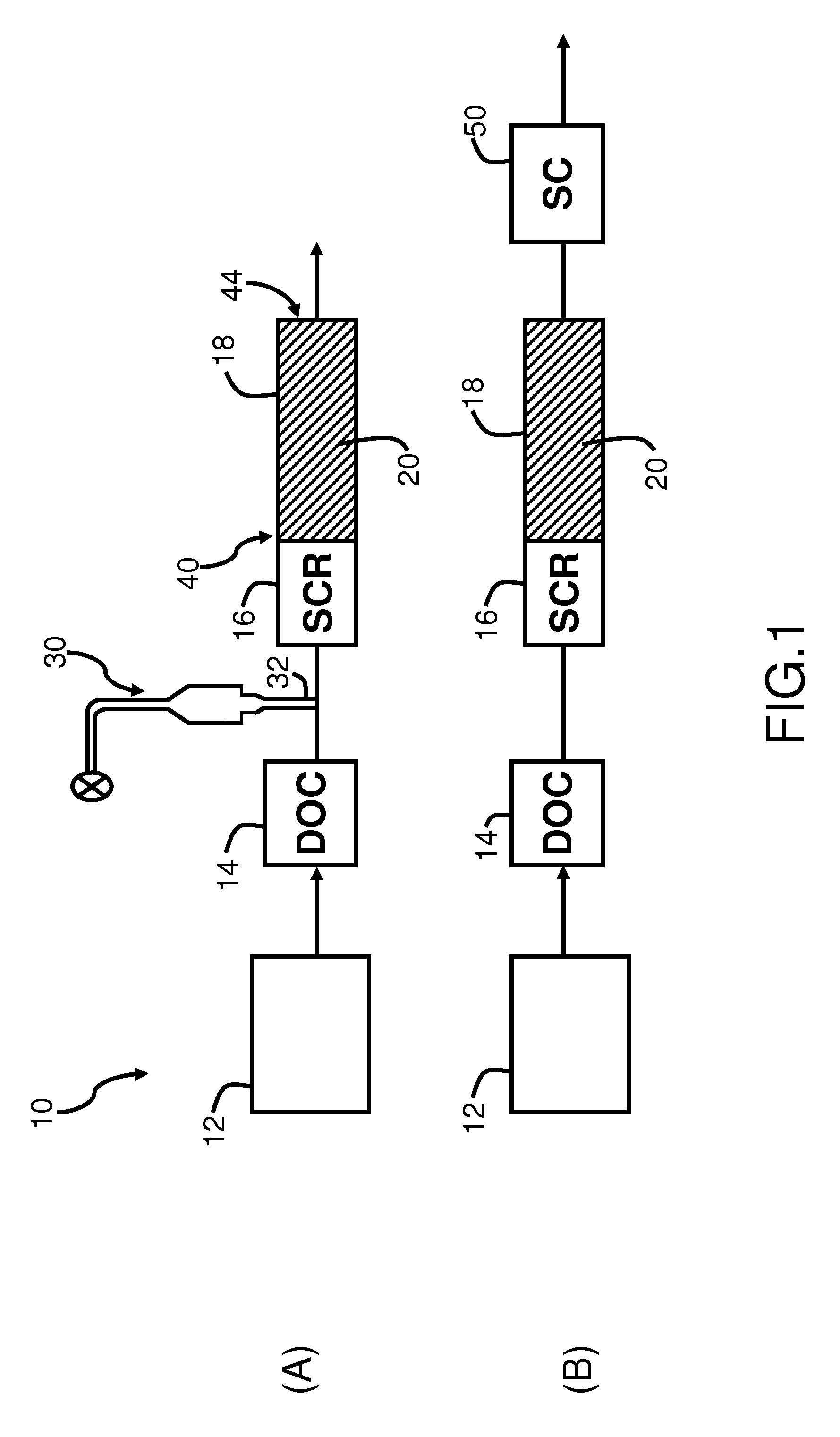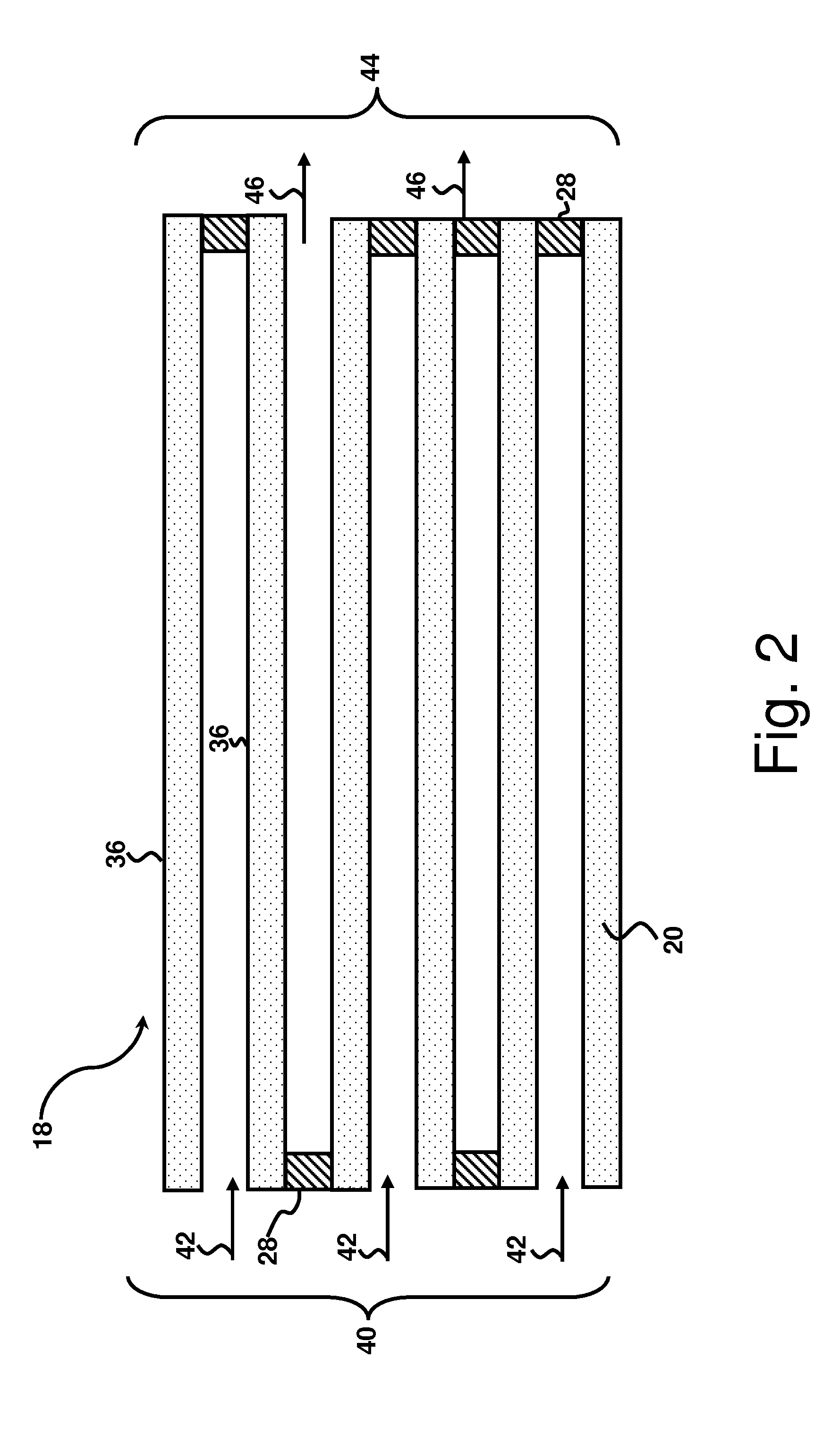Diesel engine exhaust treatment system
a technology for exhaust treatment and diesel engines, which is applied in the direction of machines/engines, mechanical equipment, surface coverings, etc., can solve the problems of increasing the backpressure in the exhaust system, limited space available for packaging all of these components, and high production costs of the system, so as to achieve compact and efficient removal of undesirable components and minimal backpressure
- Summary
- Abstract
- Description
- Claims
- Application Information
AI Technical Summary
Benefits of technology
Problems solved by technology
Method used
Image
Examples
example 1
[0046]A conventional SCR catalyst was positioned upstream from an SCR-coated filter having a low washcoat loading of 1.1 g / in3 in accordance with the invention. The system backpressure and conversion efficiencies of the exhaust gas treatment system was compared with a system including a single SCR-coated filter at a higher washcoat loading of 2.1 g / in3.
[0047]The steady state backpressure was measured at a bench flow reactor. The gas flow included 5% CO2, 4.5% H2O and the balance N2, and the total flow rate was 16.1 liter / min. The backpressure measurement was carried out at 150° C. As shown in FIG. 3, the use of a single SCR-coated filter with a loading of 2.1 g / in3 (SCRF_H, 1 “Dx3”L) generated significantly higher backpressure than a bare high porosity (HP) filter substrate. In contrast, an SCR-coated filter with a catalyst loading of 1.1 g / in3 (SCRF_L, 1 “Dx3”L) generated significantly lower backpressure than the first, higher loaded SCR filter (SCRF_H) and only slightly higher bac...
example 2
[0048]The catalytic efficiency of the system of Example 1 was evaluated. Steady state activity testing was conducted under the following conditions: flowing 350 ppm NH3, 350 ppm NOx, 14% O2, 5% CO2, 4.5% H2O, and the balance N2. The total flow rate was 12.88 liter / min. The results are shown in FIG. 4. As can be seen, at the lower catalyst loading used in embodiments of the invention, the single, low-loaded SCR catalyst (SCRF_L) has a lower NOx removal efficiency at the temperature range of 150° C. to 500° C. in comparison with the single, higher loaded SCR-coated filter (SCRF_H). The combined system including a conventional SCR catalyst and low-loaded SCR filter (SCR+SCRF_L) having an equivalent total catalyst loading to SCRF_H showed slightly higher NOx removal than SCR_H alone. It can be seen that an exhaust aftertreatment system including an SCR filter at low loading in combination with a conventional SCR catalyst generates significantly lower backpressure than single catalyst sy...
PUM
 Login to View More
Login to View More Abstract
Description
Claims
Application Information
 Login to View More
Login to View More - R&D
- Intellectual Property
- Life Sciences
- Materials
- Tech Scout
- Unparalleled Data Quality
- Higher Quality Content
- 60% Fewer Hallucinations
Browse by: Latest US Patents, China's latest patents, Technical Efficacy Thesaurus, Application Domain, Technology Topic, Popular Technical Reports.
© 2025 PatSnap. All rights reserved.Legal|Privacy policy|Modern Slavery Act Transparency Statement|Sitemap|About US| Contact US: help@patsnap.com



